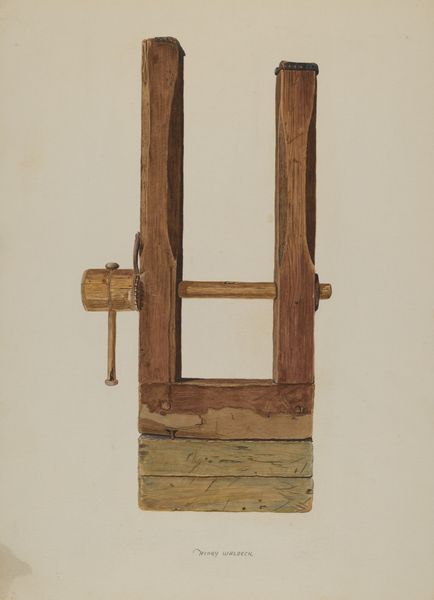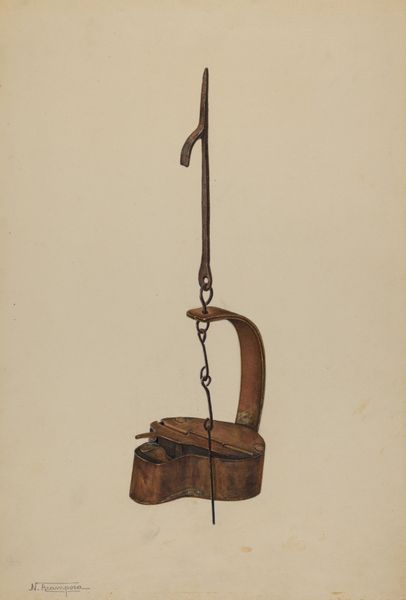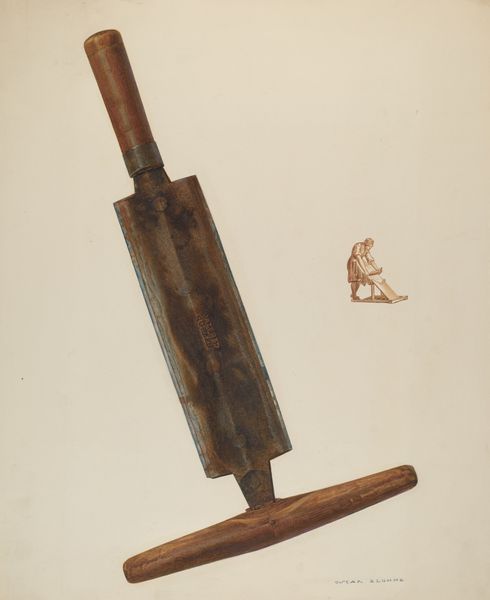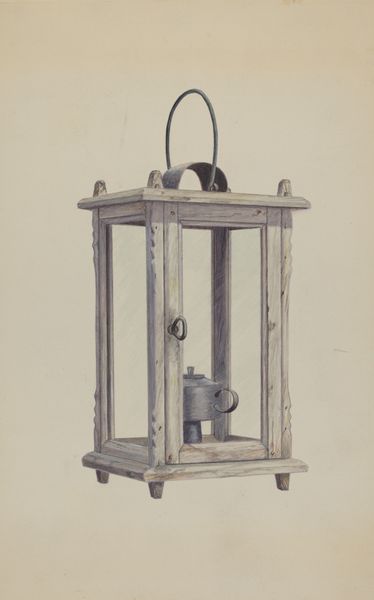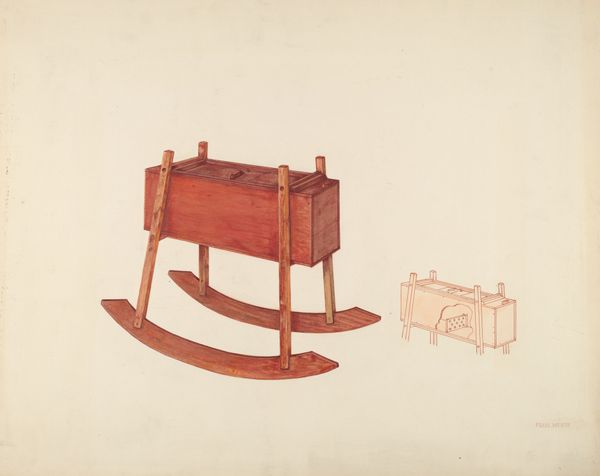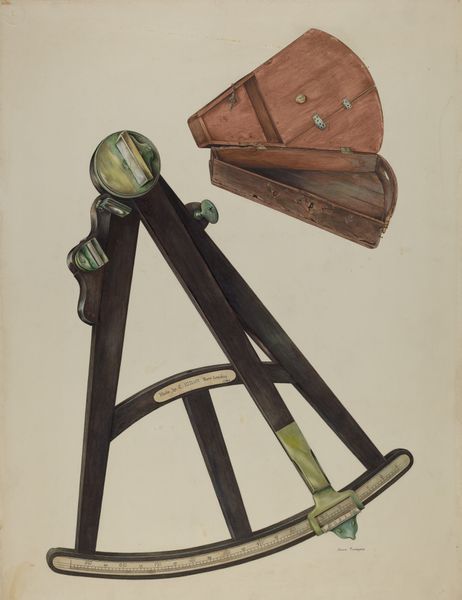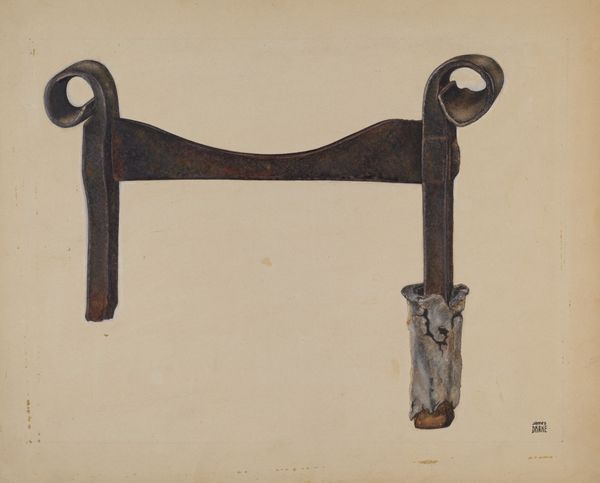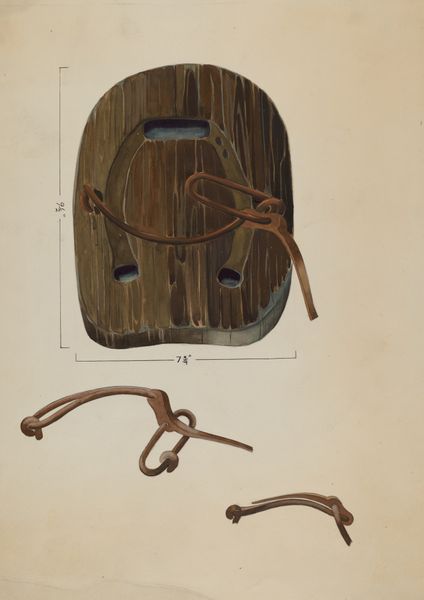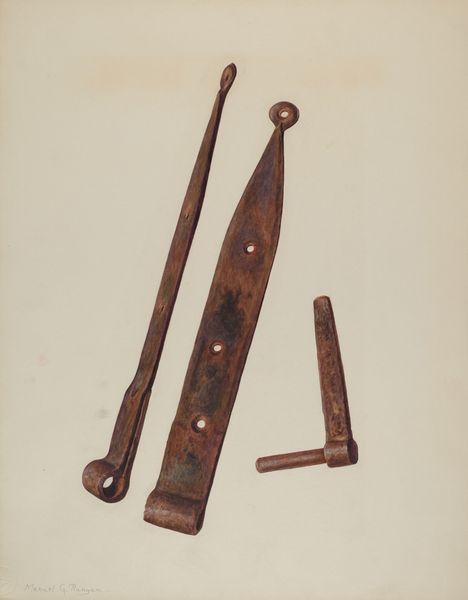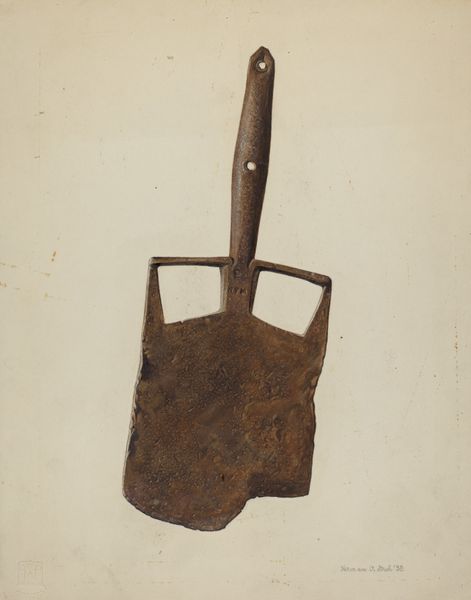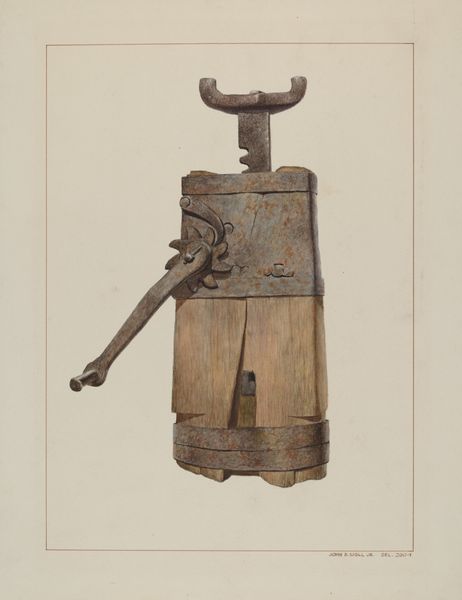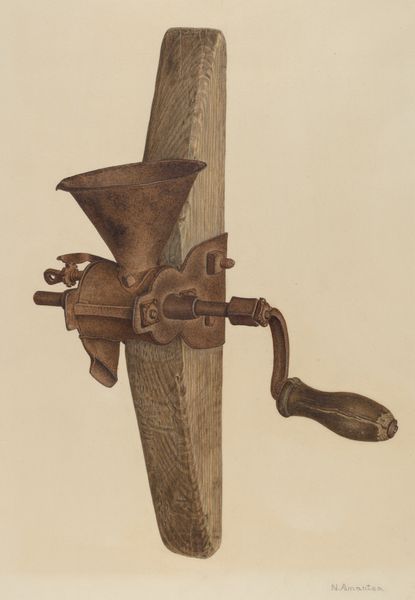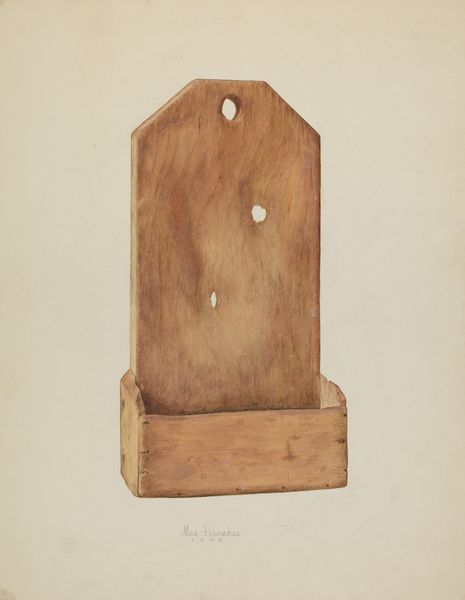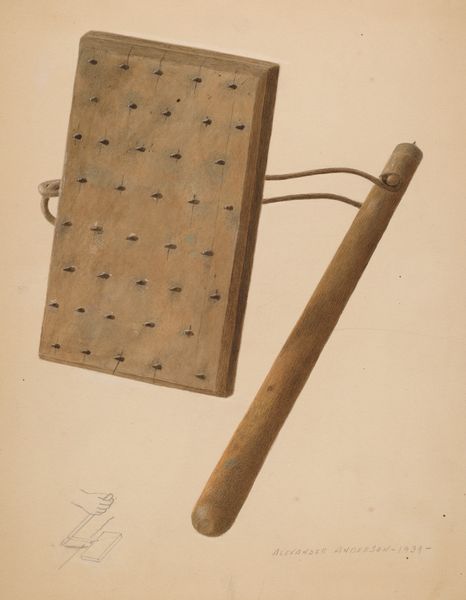
drawing, watercolor, pencil
#
pencil drawn
#
drawing
#
charcoal drawing
#
watercolor
#
pencil drawing
#
pencil
#
academic-art
#
watercolor
Dimensions: overall: 43.6 x 32.1 cm (17 3/16 x 12 5/8 in.) Original IAD Object: gibbet: 14" high; coffin: 14" long; stick: 12" long
Copyright: National Gallery of Art: CC0 1.0
Editor: This is George File's "Stage Props for 'Punch'", circa 1937. It's a drawing that looks like it incorporates watercolor, pencil, and maybe even charcoal, depicting what seems to be a puppet stage and props. It strikes me as slightly melancholic. What do you see in this piece, particularly regarding its materiality and context? Curator: I’m drawn to the work’s depiction of the materials used in theatrical production at this time. Note the crude, almost utilitarian, quality of the wooden frame, the rough-hewn nature of the timber, and the clearly visible construction techniques, held together with rope. The imperfections make the materials tangible and reflect the social conditions impacting how art and entertainment are manufactured and consumed. This piece invites us to consider the labor behind performance. What’s your sense of its scale in relation to that idea? Editor: It's interesting to consider scale. Looking at how the stage and props are rendered with such care and detail, it emphasizes their materiality and production; but maybe the small size also reflects the kind of humble entertainment it represents and how it reaches specific audiences. Curator: Precisely. And that accessibility matters. How do these material choices democratize art? We also should consider what is included in the frame; the artist focuses on structural supports that make stage props mobile, visible from varied vantage points, and functional. File is inviting the viewer to think about labor and the nuts and bolts (or, ropes and beams) behind any spectacle. Does this emphasis shift your interpretation of its emotional tone? Editor: Definitely. Focusing on the materials and their creation makes it less about a feeling of sadness, and more about recognizing the everyday craftsmanship that brings art to life. Curator: Indeed, it challenges the traditional divide between high art and craft, prompting a reassessment of both. Editor: Thanks, seeing it through that materialist lens has given me a whole new appreciation for it.
Comments
No comments
Be the first to comment and join the conversation on the ultimate creative platform.
